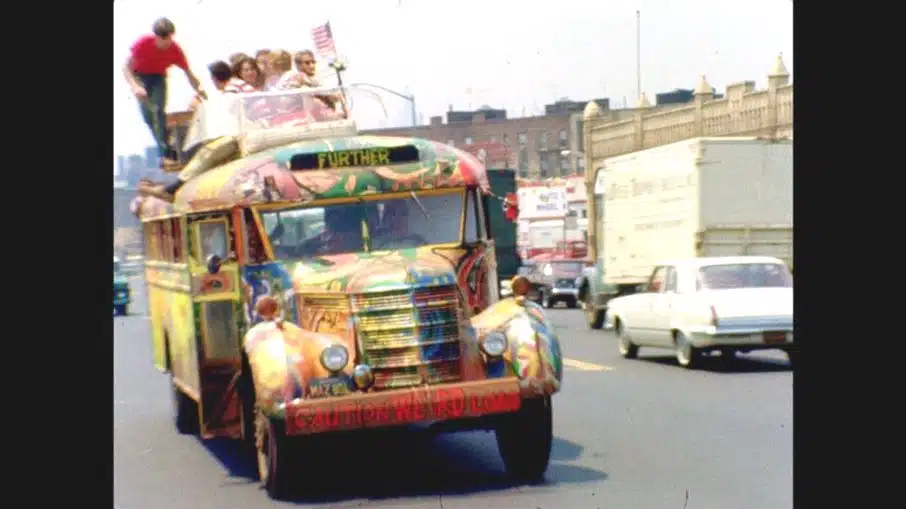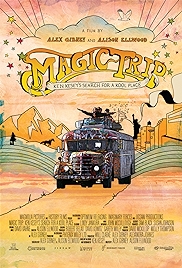A movie for every day of the year – a good one
29 January
Mantra Rock Dance, 1967
On this day in 1967 one of the key events of the era of psychedelic rock, and the hippie era generally, took place. It was organised by the International Society for Krishna Consciousness, who saw it as an opportunity for their founder, AC Bhaktivedanta Swami, to speak to a broader public than normal. The reason why there would be a broader public was because of the other people taking part – the bands Grateful Dead and Big Brother and the Holding Company (lead singer: Janis Joplin), Moby Grape, beat poet Allen Ginsberg, LSD guru Timothy Leary and LSD manufacturer Augustus Owsley Stanley III (aka Owsley). Artist Harvey Cohen designed the poster (“bring cushions, drums, bells, cymbals”). It took place in the Avalon Ballroom, in Haight Ashbury, the San Francisco area most closely associated with the countercultural movement. 3,000 people turned up and were treated to a psychedelic “liquid light” show in the hall, before the Swami’s followers came on to sing hare krishna, followed by Allen Ginsberg’s introduction of the man himself, who then led more than two hours of chanting. This was followed by what you might call more traditional fare – rock bands playing rock music. Even though the hippies and the Hare Krishna’s had little in common apart from a declared love of peace, from this point on the two were welded together in some strange cultural lock-step.
Magic Trip: Ken Kesey’s Search for a Cool Place (2011, dir: Alison Ellwood, Alex Gibney)
A foundation myth of hippiedom and the countercultural 1960s is Ken Kesey and his Merry Prankster company’s 1964 trip across the USA in an old bus which they had painted psychedelically and christened Further. Continuing the theme, they shot the whole journey in brilliant colour, film which for years was missing. Kesey, at 29, had already written One Flew Over the Cuckoo’s Nest and Somewhere a Great Notion and saw the bus, the journey and the film being shot as they went as his next great artistic move. Of the camera he says, “Shakespeare would have used it if he was alive today”, like the great showman and huckster he was.
Alison Ellwood and Alex Gibney’s documentary attempts to put that trip back together, from existing footage, with voiceover and interviews from the present time with travellers on the bus giving some wistful though never cynical backward-looking context. Also notably on board is Neal Cassady, Beat totem, Kerouac amigo, speed freak, and his jittering, always-on tic-driven personality is as much of a pain from all these decades later as it must have been at the time. Cassady apart, the overwhelming impression given is of a world of gigantic optimism, America in its pomp, with Kesey and co’s drug-fuelled hi-jinks-ridden journey both a celebration of the birth of a new countercultural moment and also its victory lap. In fact from this distance these proto-hippies don’t seem countercultural at all; they seem totally in tune with the sheer electric promise of the time. The camera on the journey spends a lot of time logging the “straightness” of the outside world as compared to the “they just don’t get us” out-there-ness of the acid-dropping travellers inside, but from this distance everyone looks cool – the cool cats inside and the Mad Men-suited “straights” outside. “We weren’t long-haired and we weren’t irresponsible,” Kesey remembers. And he also reminisces about how he got into LSD – he was training for the US Olympic wrestling squad at Stanford in 1959 when he was recruited by the government for an “experiment” – and how his attitude to drugs changed when it became fashionable. Kesey isn’t anti drugs, but he is anti a society that runs on drugs – perhaps that’s the Stanford man speaking. Or perhaps it’s just a man who recognises that there’s nothing more boring than someone else’s trip – the evidence is all too obviously here.
The film isn’t all archive footage. Some of it is reconstruction, though it’s hard to work out what is and what isn’t – I reckon it’s when the picture gets sharp and steady, though that might be my prejudices – and the entire tone is of a wistful late-night look back while wiping down a table. Kesey had fun on the trip, met a lot of cool people en route, got arrested for marijuana as he got to New York, and never wrote another great book. Ruefully he admits that perhaps he fried his marbles. Though he maintains that his greatest work is the bus. Cut to a shot of the bus now, still recognisable but barely hanging together now it’s a lot further along up the road.
Why Watch?
- From footage missing presumed dead
- A trope of Western culture is born
- Stanley Tucci’s never snide narration
- Meet people called Stark Naked, Gretchen Fetchin and Zonker
Magic Trip: Ken Kesey’s Search for a Kool Place – at Amazon
I am an Amazon affiliate
© Steve Morrissey 2014

